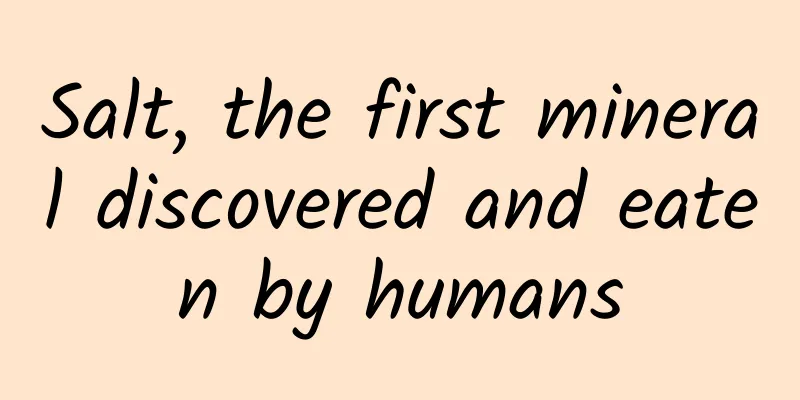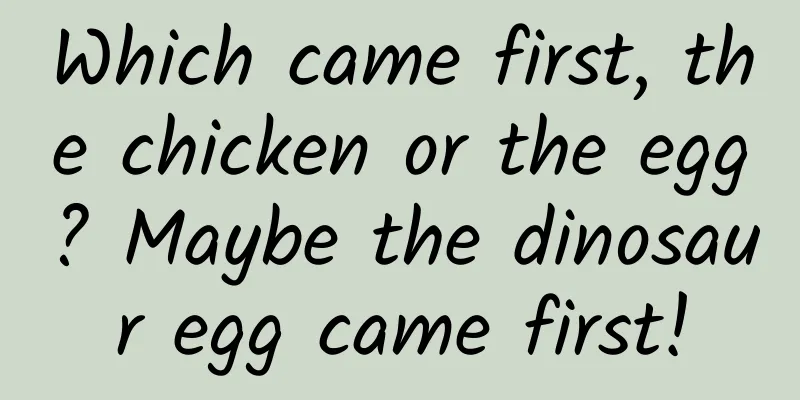Salt, the first mineral discovered and eaten by humans

|
Salt is a necessity for human survival. Throughout the ages, salt has been strictly controlled by the highest rulers as a national strategic material. Even in today's world of oversupply, salt is still a state monopoly. Among the many substances that sustain human survival, we have a worship and fear attitude towards salt. The repeated nationwide salt-grabbing incidents in recent years are proof of this. We seem to be very worried about losing it or not being able to get it. Not only that, shaped salt was also a symbol of national etiquette throughout the ages and an important item for national sacrifices. This custom continued until the Qing Dynasty. In fact, China is a country that is not short of salt. There is sea salt in the east, well salt in the middle, and lake salt in the west. Towns that prosper because of salt run through the east, west, south, and north, such as Yancheng in Jiangsu, Zigong in Sichuan, Yuncheng in Shanxi, salt wells in Tibet, and salt lakes in Xinjiang. It is said that the Chaerhan Salt Lake in the Qaidam Basin alone is enough for my country's 1.3 billion people to consume for more than 4,000 years. 01How did early humans obtain salt? Salt is a mineral existing in nature. "Brine is created by nature, and salt is created by life." Humans did not create salt, but only discovered and used it. When did humans begin to discover and eat this "healthy crystal"? According to research, early humans lived a primitive hunting life of "eating raw meat and drinking blood", and the salt they needed for life was obtained from animals. So how do animals, which have similar cell tissues to humans, obtain salt? Some researchers have discovered an interesting phenomenon on an ancient transportation map of North America. The roads on this map have strange shapes and are obviously formed by the expansion of natural goat paths. These roads all pass through some salt-containing rock formations or brine springs. So they speculate that these roads were routes for animals to obtain salt in the past. This is the instinct given to animals by nature. They can always find what they need in nature. After humans left the forest and ate grains, they could no longer get all the salt they needed from animals, so they also joined the search for salt. The first way for early humans to find salt was to follow the footprints of animals. Those repeated footprints often led to salt mines. ▲The story of a shepherdess who discovered a salt spring by following the sheep path has been circulating in Zigong Salt Field. Image/From the Internet 02Burning wood to make salt Wild animals have a closer relationship with nature than humans do. But the biggest difference between humans and animals is that they are never willing to be controlled by nature. When adding food can't meet their needs, they think of producing salt themselves. The Maya people who lived in the tropical rainforest had long mastered the extraction of salt from plants. They burned certain types of palm leaves and green grass, soaked the ashes in water, and evaporated them into salt. In the "Book of Jin: Biography of the Eastern Barbarians", it is also recorded that the ancient Sushen people in the northeast had no salt, and "burned wood to make ashes, extracted juice and ate it." Even in the Ming Dynasty, when ethnic minorities living in Guangxi had no salt to eat, they would "burn wood to get salt" like the Mayans. In "Yuexi Poetry", there is a poem that says "the mountains are deep and the roads are long, so salt cannot be obtained. We burn banana leaves to make ashes to pickle vegetables." This unique way of getting salt even affected the mining of pond salt. "Huayang Guozhi" records that "Yue Jun and Zuo Yi have salt ponds, pile up firewood, fill them with pond water, and then burn them to make food." This is probably the oldest brine salt extraction process. ▲It is said that the Mayans were the first to extract salt from plants. Image/From the Internet 03 Boil the sea for salt Life for our ancestors by the sea was much better than living deep inland because there was an inexhaustible supply of salt in the sea. "Shuowen Jiezi" records that "in ancient times, Susha first sold sea salt." It is said that Susha lived in the era of Shennong. There are different records of him in ancient books, whether he was a person or a tribe. Sea salt is the earliest salt discovered in my country. Boiling the sea to make salt is not really about boiling and frying seawater, because the salt concentration in seawater is low, and it takes a lot of fuel to saturate and crystallize it, which is not economical. The ancients used the method of making brine first and then boiling salt to obtain salt. They spread fine sand that is easy to absorb brine on the ground, poured seawater, and used the sun to evaporate the water to concentrate the brine. Then, the sand that absorbs brine is placed in a pit and poured with seawater to become concentrated brine. Finally, the brine is placed in a pot and boiled into salt. In coastal salt fields, Shusha is regarded as the inventor and founder of sea salt. ▲Scholar Feng Yanjun introduced "Susha Boiling Sea" in his book "Yan Du". Picture/from the Internet 04Boil water to get salt Taking soil from saline-alkali land and boiling salt was also a common way to obtain table salt in ancient times. The Book of the Later Han Dynasty, Biography of the Southwestern Barbarians, records that Wenshan (now the area of Maoxian and Wenchuan counties in Aba Prefecture, Sichuan) "has salty soil, which can be boiled to make salt. Musk sheep, cattle and horses all become fat after eating it". The benefits of rock salt were already recorded in the Water Classic: "There are stones 43 miles from the entrance of Tangkou in Quren County (now Yunyang County, Chongqing), which can be boiled to make salt. The big stones are as big as a liter. When boiled, the water will be exhausted and salt will become." This is the most reliable record of rock salt mining. ▲Picture of ancient people boiling water to make salt. Picture/from the Internet 05Drilling wells to extract brine The discovery and use of well salt originally originated from the knowledge of salt springs. In many well salt producing areas, there are many stories such as "white deer drinking from springs", "cow licking the ground to produce salt", and "shepherdess discovering salt springs". For example, the well salt in Yanyuan, Sichuan, is said to have been discovered by a shepherdess, who was worshipped as the "Salt God" and honored as the "Mountain Opener". The Zigong Salt Field is said to have been discovered by a hunter named Mei Ze, who chased a white deer to obtain a salt spring. Mei Ze was later worshipped as the "Well God". Sichuan is the earliest region where well salt appeared. During the Warring States Period, Li Bing, the prefect of Qin Shu County, began to survey brine while controlling water, and dug wells to extract brine and boil salt. According to the "Huayang Guozhi Shuzhi", "After the fall of Zhou, King Xiaowen of Qin appointed Li Bing as the governor of Shu. Bing was able to understand astronomy and geography... He also knew the water veins of Qi, dug Guangdu salt wells and ponds, and Shu became rich in health preservation." Therefore, Guangdu Salt Well is considered to be the first salt well in my country. ▲Pictures of digging wells and boiling salt in ancient books. Image/Sourced from the Internet 06Be careful with words Characters are symbols used by humans to record language. Chinese characters originated from pictographic characters that evolved from early pictorial forms. The characters themselves contain the ancient people's understanding of the world. It is said that the first person to create the word "鹽" was Cang Jie. It started in the Yellow Emperor era and has a history of more than 4,000 years. Cang Jie combined the multiple meanings of Su Sha's salt-making experience and being a minister of Emperor Yan, and created the word "鹽". The ancient word "盐" is composed of four parts: "臣", "人", "卤", and "皿". "臣" represents Su Sha's identity as a minister of Emperor Yan; "人" and "卤" represent that salt is made by people boiling brine. "皿" describes the utensils used to boil salt. The word "盐" composed of four characters, if replaced with today's language, can be expressed as "organized by the state, people use tools to boil brine into salt". The process of creating the word has impeccably expressed the causes and consequences of salt and the characteristics of the franchise, and the scene of ancient salt making is almost ready to come out. The powerful information and characteristic charm contained in ancient Chinese characters are fully expressed in this word "盐". ▲The word "Salt" in ancient Chinese characters and in Western languages. Image/Sourced from the Internet The earliest explanation of salt appeared in Xu Shen's "Shuowen Jiezi". "Salt means salty, from the sound of brine." Duan Yucai annotated it in "Shuowen Jiezi": "Salt and brine. Brine created by nature is called brine, and salt created by human beings." This means that salt is brine. The naturally formed one is called "brine", and the one processed by human beings is called "salt". In modern dictionaries, salt is explained in Ciyuan as "the raw material of salty taste in food." Cihai and Zhongwen Da Cidian both explain it as "salty. In ancient times, sea salt was first made by boiling sand. The salt is grayish white in color and salty in taste. Because it is often used for food, it is also called table salt." The British scholar Joseph Needham had his own unique insights into the word "lu". In the fifth volume of "Science and Civilization in China", he believed that the word "lu" was a "bird's-eye view" of salt drying in salt ponds. ▲The Sigeng Salt Field in Dongfang City, Hainan. Photo by Yang Jian |
<<: Besides looking good, what other uses do fluorescent organisms have?
>>: A powerful national device: Earth system numerical simulation device
Recommend
Why has the Japanese electronics industry, which once dominated the world, lost its legend after Walkman, and has no more star products?
In the 1970s, the Japanese government implemented...
Beijing CDC issues health tips for New Year's Day and Spring Festival: encourage people to avoid peak travel times, return home, return to work, and return to school during the Spring Festival travel rush
At present, the epidemic is spreading abroad, and...
5 methods to teach you how to effectively improve retention rate, TikTok and PUBG are using them!
This article will discuss in detail how to system...
Samsung's monopoly on OLED screens puts domestic mobile phones under pressure
Samsung, which was involved in the presidential c...
Is the smart TV market really activated? Applications need to be more powerful!
In the era of rapid development of the Internet, ...
Back to school season | Do you experience cervical pain and scoliosis after studying for a long time? Correct posture can help you stay away from the invisible "neck" enemy!
With the start of the new school year, students a...
Mobile phones are getting more and more expensive, but why are fewer and fewer people putting screen protectors on their phones?
Nowadays, mobile phones are getting more and more...
Master the core technology!
This is a photo of a commercial maglev 3.0 versio...
"Togetherness" is passed down, there is a mystery behind the Beijing Winter Olympics medals!
The Beijing Winter Olympics are getting closer! T...
Live broadcast room operation skills and user stickiness!
Today we will mainly talk about two parts: how to...
How to do well in Baidu Q&A? How to do marketing promotion on Baidu Q&A?
There are many ways of online promotion, such as:...
Hardware innovation and experience innovation are the key to the future development of smart TVs
The TV game market was once considered a blue oce...
How to evaluate whether KOL marketing is effective? Look at these 5 points!
In a recent survey, 76% of marketers said that th...
With the trend of social e-commerce, has KOL marketing become a new traffic entry point?
Why do Chinese companies choose KOLs as their fir...









